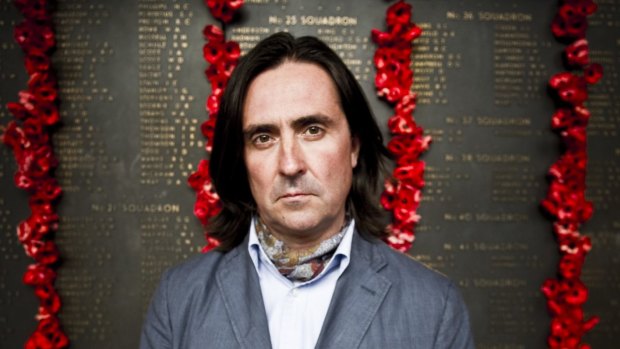This was published 9 years ago
The Memorial: Beyond the Anzac Legend charts WWI from a Scot's perspective
Perhaps what we need is an outside perspective on the Anzac legend, and Scottish documentary maker Neil Oliver has provided one, writes Neil McMahon.
By Neil McMahon
It's an Australian story, told through the eyes of a Scot, on the anniversary of a century-defining conflict that resonates in remembrance across the world a hundred years on. When Neil Oliver came to Australia to explore the country's connection to the Great War, he was seeking out our particular relationship to this epochal event. He found it in a building: the Australian War Memorial.
The archaeologist and historian's five-part series The Memorial: Beyond the Anzac Legend debuts on Foxtel's History Channel on November 4, and is billed as a fly-on-the-wall observation as the memorial races to complete $32 million renovations in time for Remembrance Day, 2014.

Lest we forget: Neil Oliver has documented Australia's response to World War I.
That date - November 11 - this year comes laden with added weight. It is Remembrance Day. It's also the anniversary of the Whitlam dismissal, and Oliver's series delivers us a parade of former prime ministers to match their collective public appearances last week on the passing of Gough Whitlam: Fraser, Hawke, Keating, Howard and Abbott all share their thoughts on the meaning of the iconic landmark. The premiere also comes just days after leaders here were reflecting on the stature of the Canberra memorial in the wake of the deadly assault on the building that serves the same purpose in Canada.
For Oliver, the Australian memorial proved a surprise, both in its scale and in the central place it holds in the Australian psyche.
"As a Scot … Australia was still a new place, a strange place to me," he told Fairfax Media.
"There was an element of the scale of the Australian War Memorial taking me by surprise. We've got a national memorial in Scotland … but it's not on the scale of what you've got in Canberra and offhand I can't think of anywhere else in the world that has anything quite like Australia's war memorial.
"It surprised me and it's due in no small part to the fact that Australia was such a young country in 1914 … that in a sense had left the world's past behind and was looking ahead and then got sucked into a world war. I began to grasp just what a central, pivotal moment it was in Australia's sense of self."
World War I holds similar significance for Oliver himself. His paternal grandfather fought in France; his maternal grandfather at Gallipoli. He notes how many of Australia's veterans shared his ancestry. "I've always felt [it] was part of my family's story. Some people will say, 'What's a Scot doing telling the story of Australia's Great War?'. So many of them were just off the boat. There were Scottish accents there, Welsh and Irish accents - you were in the process of becoming Australia prior to going off to World War I."
The series takes us into the heart of the memorial. The key to its power in part is that it explores not just what the memorial represents, but all that it contains, and the people who care for it. "You get that sense of them being very protective because they know they're handing things on - they know that after their time has finished the collection is still there. They're kind of a special breed."
Then there are the ordinary Australians sharing their thoughts and memories. And that extraordinary collection of former prime ministers, along with the current governor-general and his immediate predecessor. Oliver says there was little difficulty assembling this stellar cast.
"I think it attests to the central and pivotal roll the war memorial plays in Australian public life. There was a sense of, 'As if you could say No'. It would almost have been disrespectful."
Some of the thoughts expressed, while not new, may revive old controversies - Keating and Fraser worry that the nation anchors its identity in war; Howard and Abbott take another view - and it is perhaps valuable that this story is being told by a visitor. We've heard it enough from ourselves; Oliver's perspective brings the memories and debates to fresh life.
"I was able to understand quite instinctively both strong points of view," he says, noting that if nothing else the war memorial's very presence is a reminder to all of the lessons of history.
"The architecture of Canberra is such that leaders don't get to make any decisions without looking out the windows and seeing the war memorial as a ghostly and monitoring presence. It's saying if what you're doing is putting Australians in harm's way, these are the consequences."
The Memorial: Beyond the Anzac Legend, Tuesday, History Channel, 7.30pm.